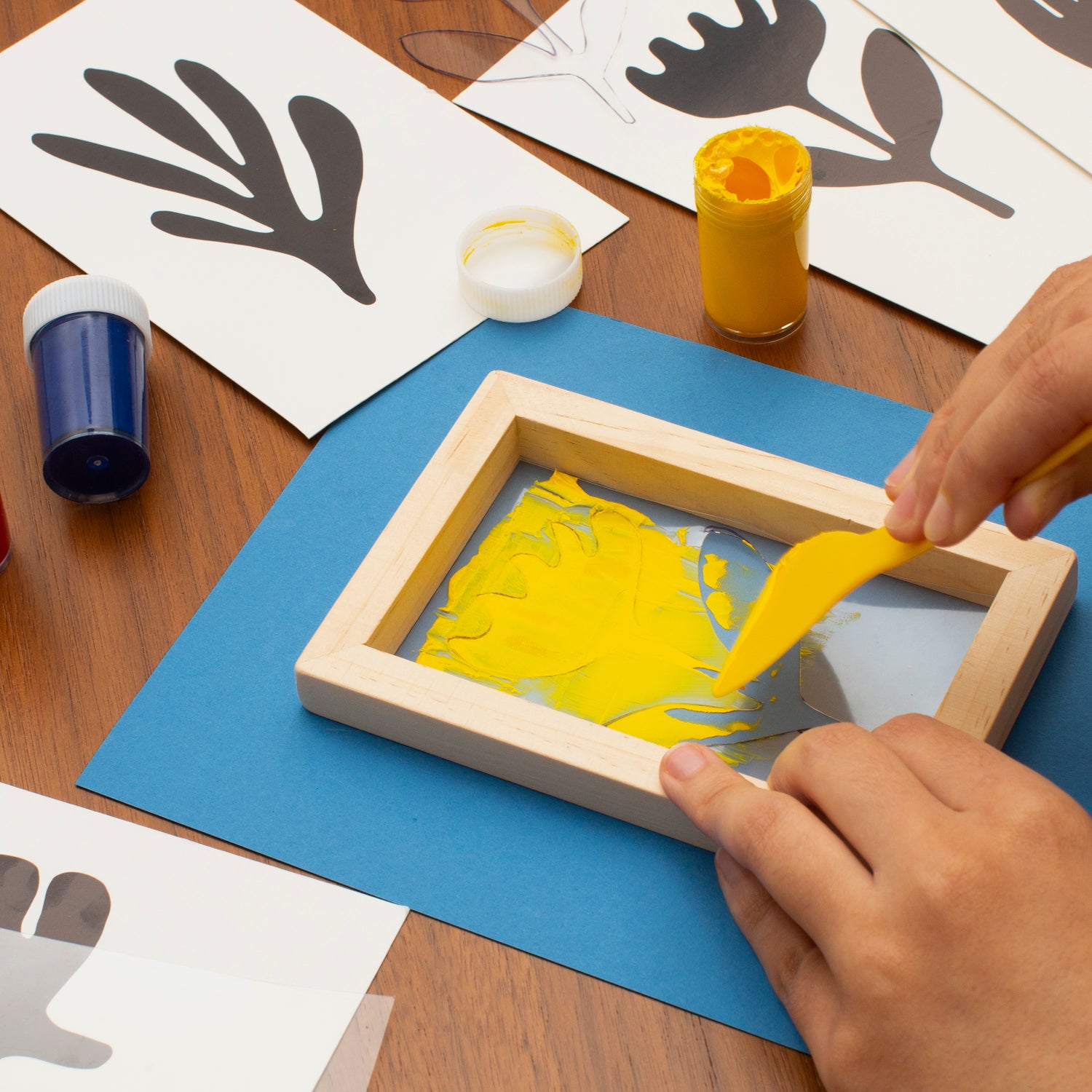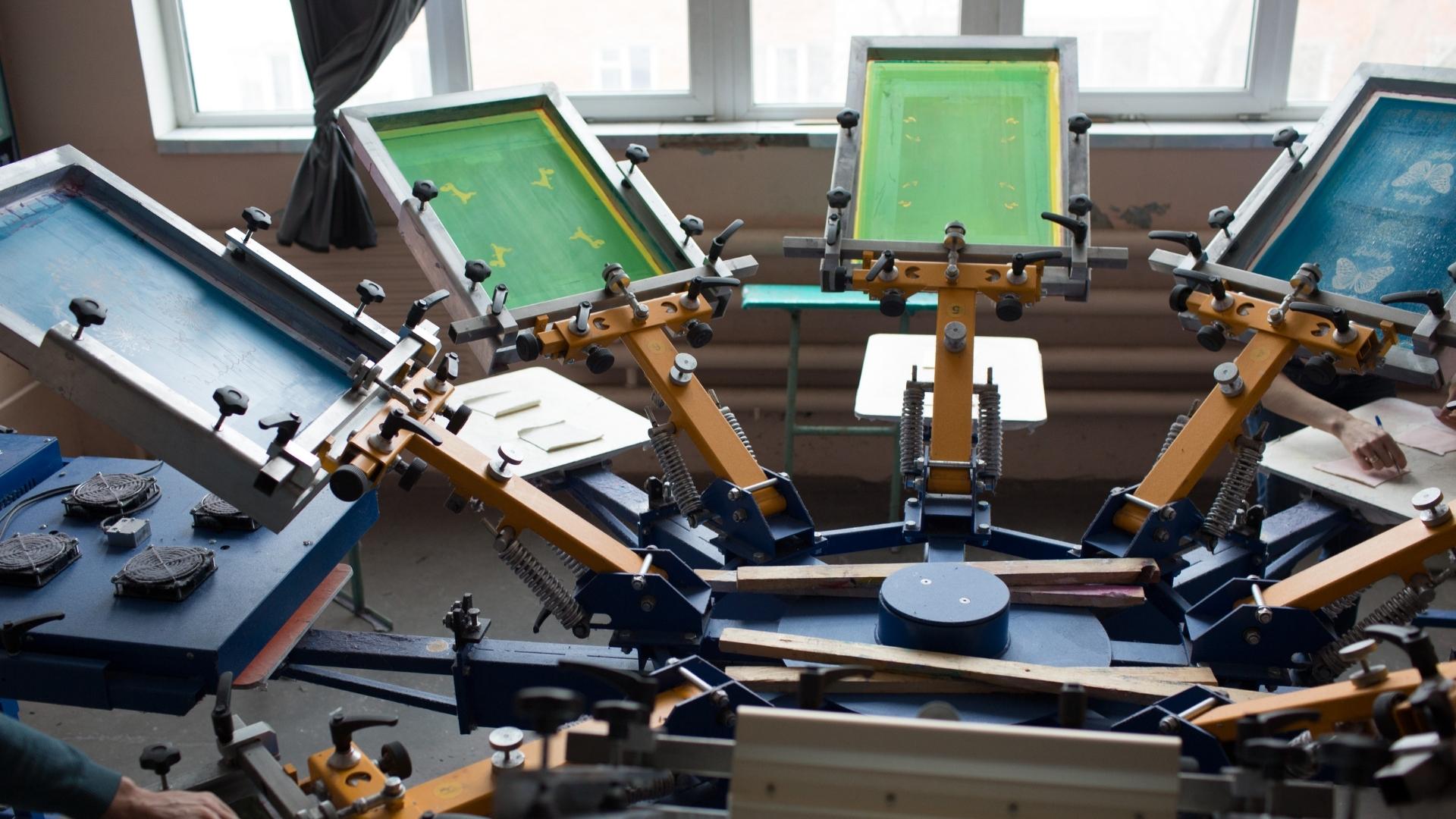The Crucial Guide to Comprehending Screen Printing and Its Versatile Utilizes
Screen printing has an abundant background that goes back to old times, developing right into an innovative strategy made use of across different industries today. This overview discovers the complexities of the screen printing process, describing its applications in advertising and marketing, home, and fashion décor - 10:9 Design contact. Recognizing these basics can open up innovative potential for both artistic and commercial jobs. The following areas will expose essential pointers and methods to enhance one's screen printing undertakings
The History of Screen Printing
Screen printing has roots that map back centuries, its advancement reflects the artistic and technological developments of numerous societies. Coming from ancient China, the method was at first utilized for decorating textiles and later spread to Japan, where it became important to Ukiyo-e woodblock printing. The technique moved to Europe in the 18th century, where it acquired popularity among craftsmens and business printers. The invention of photo solution in the 20th century reinvented screen printing, enabling more detailed layouts and greater efficiency. Musicians like Andy Warhol even more moved its appeal, making use of the tool to create famous jobs that blended commercialism and fine art. By the late 20th century, screen printing had actually established itself as a functional method, used in vogue, advertising, and great art. Today, it proceeds to develop, incorporating electronic innovation and expanding its applications across different industries.
The Screen Printing Process Explained
Screen printing changes artistic visions into concrete layouts through a collection of specific actions. A photo is developed and after that transferred onto a screen, typically made of fine mesh fabric extended over a frame. A light-sensitive emulsion is related to the screen, which is exposed to light, hardening in areas not covered by the photo. After rinsing the unhardened emulsion, a stencil is created.
Next off, the screen is placed over the substrate, whether it be material, paper, or another material. Ink is after that pushed through the open locations of the stencil making use of a squeegee, transferring the design onto the substrate listed below. This procedure can be repeated for numerous colors, needing different displays for each and every hue. Lastly, the printed product is healed using warm to guarantee the ink sticks properly, causing a sturdy, vibrant style on-line.
Kinds of Screen Printing Techniques

Furthermore, specialty methods, such as discharge screen printing, get rid of color from the material to create softer prints, while aluminum foil screen printing uses metal aluminum foil to accomplish a shiny coating (10:9 Design LLC Company). Each method uses distinct attributes, accommodating numerous creative needs and production ranges, inevitably expanding the opportunities within the screen printing domain
Applications of Screen Printing in Different Industries

In addition, the signage and advertising fields make use of screen printing for producing appealing screens and banners. This approach permits vibrant shades and complex layouts that capture interest. In electronic devices, screen printing is utilized for using conductive inks to circuit boards, essential for component links. In addition, the home decoration sector welcomes screen printing to generate distinctive designs on fabrics and wall surface art. On the whole, screen printing functions as a vital tool throughout varied areas, enhancing products with personalized and aesthetically attractive graphics.
Tips for Effective Screen Printing Projects
While taking on a screen printing job, cautious focus to detail can significantly boost the last end result. First, selecting premium materials is necessary; this consists of the screen, inks, and substratums. Utilizing suitable mesh matters can impact ink deposition and information resolution. Preparation is equally important; detailed cleansing of screens and correct exposure times guarantee crisp prints.
Next off, precise registration is essential for multi-color prints. Using placement tools can help attain precise layering. In addition, screening prints on scrap products before manufacturing assists identify prospective problems without losing sources.

Frequently Asked Questions
What Products Are Ideal for Screen Printing on Textile?
Cotton and polyester blends are suitable for screen printing on textile as a result of their sturdiness and ink absorption. Additionally, specialty fabrics like silk or canvas can generate distinct structures and coatings, improving the overall style high quality.
Exactly how Do I Tidy and Maintain Screen Printing Equipment?
To cleanse and maintain screen printing equipment, one should consistently clean displays with suitable solvents, evaluate mops for wear, oil moving components, and store all products in a dry, dust-free environment to lengthen their lifespan.
What Are the Ecological Impacts of Screen Printing?
Screen printing can have considerable ecological impacts, consisting of chemical waste from inks and solvents, water use throughout cleansing procedures, and power consumption. Lasting techniques and eco-friendly products are vital for lessening these adverse results.
Can Screen Printing Be Done in the house Successfully?
Screen printing can be efficiently done at home with the ideal products and methods. Enthusiasts can produce high quality prints, though success relies on their ability degree, tools, and understanding of the process included.
What Are the Prices Connected With Starting a Screen Printing Organization?

Beginning a screen printing company entails expenses for equipment, materials, and work space. Initial costs commonly vary from a couple of hundred to a number of thousand bucks, depending upon the range, quality of machinery, and wanted production capability.
Screen printing has an abundant history that dates back to ancient times, progressing into a sophisticated technique used across different industries today. Another technique, rotary screen printing, employs round displays, facilitating constant printing on material rolls, thereby improving effectiveness for large productions. Furthermore, specialty methods, such as discharge screen printing, get rid of dye from the material to produce softer prints, while foil screen printing uses metallic foil to attain a glossy coating. In the fashion market, screen printing is commonly utilized to develop vivid designs on garments, making it possible for brand names to display their unique designs. Cotton and polyester blends are excellent for screen printing on textile due to their durability and ink absorption.